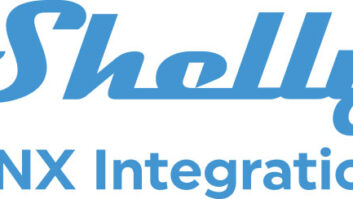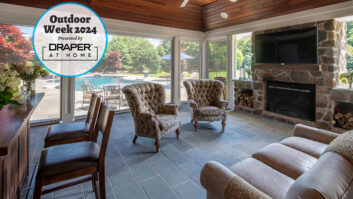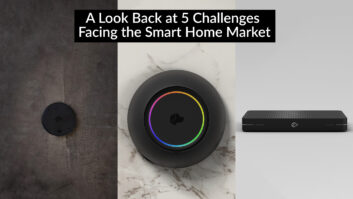Third-Party Products Boost Energy Management Features

This certified LEED Platinum Florida home combines the ELAN g! system with a solar panel array and highly efficient lighting, cooling, and geothermal heating to produce more energy than it uses.
The days when simply turning your lights off when you’re not at home to save energy are long gone. In today’s hyper-connected, IP-dominated home, energy efficiency now involves a much bigger picture of home automation and control. With most information on its way up into the cloud, homeowners are capable of managing home energy consumption from anywhere in the world with an internet connection. Advanced control systems are also increasingly buddying up with third-party components, from thermostats to irrigation systems.
Manufacturers mostly see the demand for these solutions coming from consumers, rather than being actively pitched by their systems integration partners. “Today, we are finding that dealers are only seeking out energy solutions when they encounter a serious demand from customers,” said Tracy Christmann, marketing manager at Somfy. “Energy savings has never really been a driver for home automation–though it’s becoming more popular.”
Itai Ben-Gal, CEO and co-founder of iRule, has seen dealers increase their offerings into energy management over the last two years, but the driving demand behind this move, again, is the consumer. “More and more, people are asking about how ‘green’ the devices that are being installed are, and this awareness offers the integrators an opportunity to educate and provide a solution.”
Homeowners are becoming much more educated about the savings and ROI potential from having a fully integrated automation system installed with advanced energy management features. But consumer demand is developing from other sources, in many cases.
“Energy conservation awareness efforts by utility companies and others have raised general awareness about energy management benefits,” said Paul Nagel, Control4 vice president of energy. “We have seen a number of energy management products from third parties come to market. Companies like Eragy Inc. have created energy solutions, which leverage the Control4 residential home automation platform. These solutions are independent of utility involvement and are applicable to any home.”

The nearly 12,000-square-foot Newport Beach, CA, home features a Savant home control system, which controls the heated floors, several thermostats, nine zones of heating and cooling, electronic glass doors, motorized shades, swimming pool, all of the lighting and serves as the control portal for the media server, which distributes audio and video content throughout the house.
There are also federal policies pushing homeowners to embrace the benefits of energy management, and more LEED homes are being built as a result. “The future will make energy management mandatory from government regulations or stimulus,” predicted Doug Hall, AMX senior product manager. “Energy costs will continue to rise, and solutions will become simpler to deploy, so it will become a no brainer.”
Despite all of the buzz in certain circles, managing energy consumption is still in its infancy for the most part, reminded Mitchell Klein, URC’s director of business development. “Lighting control has built a solid foundation among most integrators, yet monitoring and controlling power consumption is still too intangible for dealers to present to the typical homeowner,” he said.
Part of the challenge that this intangibility presents is quantifying savings. “The initial idea was that if you show people what they’re using, they will change their behavior,” said Reid Cram, director of marketing for Vantage Controls. “We’ve learned that’s important, but they have to be able to change behavior and see some benefits as a result.”
Vantage has approached this issue by incorporating sub-metering systems into its entire solution, providing the ability to display usage and have controls in place while also providing feedback-calculating savings. It also has added current sensing to its new dimmer modules. “Once people know what their total usage is, they want to drill down and identify opportunities based on the highest usage areas,” Cram said.
AMX is also providing this more granular energy management information with actionable controls. For managing devices that don’t have those granular capabilities, AMX offers NetLinx power management through its NXA-PDU-1508-8. The PDU box has eight electric outlets “that provide power to the appliances, but also monitors the current power consumption for those devices and feeds back to the AMX control system, which then can intelligently manage those devices,” Hall explained.
Collaboration with Lighting Control
Without a doubt, the key to managing energy consumption in a home is getting all of the disparate parts to work together as much as possible, or integrating a whole-home automation system that works with other third-party products.

On Controls integrates with many lighting systems and thermostats, including Lutron and Aprilaire, offering dealers an ability to present clients with an affordable interface that allows for energy management from popular third-party companies.
For example, AMX recently introduced its NetLinx Clear Connect Gateway, which includes AMX Light Control by Lutron. Based on the Clear Connect radio frequency technology from Lutron, the NetLinx Clear Connect Gateway wirelessly connects NetLinx Controllers with Lutron Clear Connect, dimmers, switches, occupancy sensors, switching plug-in devices, and keypads.
Clear Connect was designed for retrofit applications, but can work for new buildings as well because pulling control wires is not necessary. AMX is looking to work with Lutron on other products, including to further offer occupancy sensors, which Hall identified as one of the most important elements of future energy management systems.
Crestron’s energy management solutions take an expansive approach. “Coordinated smart management systems, such as Crestron’s integrated solution and Fusion EM, are the core of integrating energy use through lighting controls, thermostats, and other appliances,” explained Mike Malone, Crestron VP of commercial lighting controls. “Beyond just monitoring usage, the ability for the homeowner to program automated features and reduce maintenance within their system is key. We all know that dimming a light saves electricity, but there are many other surprising ways to be energy efficient and save money with an integrated control system.”
Somfy has paired up with a lighting fixture provider and some other lighting control manufacturers for third-party collaboration. “Somfy has partnered with Cooper Lighting, Evolve, and Leviton to integrate their TaHomA total home automation system with lighting and thermostat control along with motorized window coverings powered by Somfy to maximize energy efficiency,” Christmann said.
Specialized thermostat integration is also a growing trend. On Controls can control many lighting systems and thermostat companies, including Lutron and Aprilaire. “I think that we are going to see many more HVAC, lighting, and security companies offer IP control of their products,” said Glenn Murdzia, national sales manager.
Developing HVAC Integration
URC’s Klein considers HVAC to be “the next wave of mutual opportunity” for customers and dealers. These features are by no means new, but they can be under-utilized, he said. “Setback thermostats have been around for years, and now the ability to integrate heating and cooling control into our control systems ensures homeowners can leverage these features, taking advantage of controlling their homes in a much more energy-efficient manner,” Klein explained.
URC integrates with HAI and Proliphix thermostats and has created modules for The Energy Detective (T.E.D.) monitoring products, which allow for both real-time and archival cost and usage monitoring. And for lighting controls, URC integrates with Lutron, Vantage, and HAI, as well as its own URC RF-based lighting products.
Cortexa’s control system was created with a strong energy management position, and in its latest form, integrates with both high-end lighting systems like Lutron, to Z-Wave or INSTEON.
“We also tie into energy monitoring devices from T.E.D. With this device, we can tell the homeowner how much energy they are using and what it is costing them,” said Jesse Lind, Cortexa director of sales. “More importantly, we can take this data and use it to create energy-saving scenes or events that can save customers money at the most important time. If you set a limit for how much energy you want to use and that limit is met or exceeded during peak times as set up in the Cortexa, we can automatically shed energy by turning off or dimming specific lights and turning back thermostats.”
Lind also cited the savings potential from integrating with automated irrigation systems, like Rain8Net.
Savant has also reported connecting to landscape irrigation systems, controlling sprinklers. Savant’s Smart Energy device is capable of real-time energy monitoring and management by measuring energy usage and production in real-time. Smart Energy can also provide historical usage data for several devices. According to Jim Carroll, executive vice president of Savant, “the company’s future integration plans for our Smart Energy system include integration with Savant Lighting solutions, enabling a customer to measure and take automatic action for energy savings on an individual lighting load level. Also, integration with Savant Scheduling applications allow homeowners or building management to automate real-time actions for energy savings based on time, energy cost, usage, energy alerts, or any other factors.”

The algorithms Nest Labs has implemented based on built-in sensors enables the user to save energy with very little interaction.
Control4 offers tools to enable various third-party developers to write drivers for monitoring devices, including those from HouseLogix and Eragy. Eragy, the hardware-agnostic, cloud-based energy monitoring and demand management provider, recently launched a suite of home energy management applications designed for Control4 systems. Its new family of apps includes a new energy game, entry-level and premium solutions for monitoring and managing energy consumption, plus a full-featured intelligent energy management app that enables Control4 users to save energy automatically.
HouseLogix is a Control4 dealer that added a software and hardware division a year and half ago and now produces a driver specific to the Nest brand thermostat. “The idea for the Nest thermostat integration came from a need on the service side for a smarter, easier to install and configure thermostat. The options out there have been lacking, and we feel the Nest can provide a better user experience and save energy and money at the same time,” said Chris Allen, HouseLogix vice president and co-founder. “Couple that with our driver and a Control4 system, and the potential is even greater than just using the Nest alone.”
HAI focuses on the benefits that ZigBee products offer. “ZigBee home automation profile products allow control of air compressors, generators, chillers, water heaters, pumps, and virtually any other high-energy consuming device without much installation effort and can be used stand-alone with third-party products using the same profile,” said Greg Rhoades, associate director of marketing.
ELAN’s systems are designed to work entirely with third-party products that affect energy savings, including irrigation and pool/ spa systems. Joe Lautner, product manager and business development director, noted, “The new buzz is about monitoring electric consumption from the grid versus renewable (solar/wind), and what the smart grid will do to the custom installation market.” Though he admitted, “To date, there are not many custom installers that state they are making money from offering these features by themselves.”

That said, this could be an interesting trend to watch as the technologies mature and potentially permeate the market. ELAN is integrating wireless thermostats using ZWave technology and outlet control products, like those offered by Panamax and Furman. “We are also working with other devices like controllable circuit breakers.”
With both homes and businesses more energy conscious than ever, BitWise Controls sees energy management as being a very big opportunity for the CI channel, according to Krista Bergman, BitWise national sales manager. “Basically, any product that communicates via RS232 or IP for feedback is a fit for BitWise Controls,” she said. “Some of the third-party companies our dealers are integrating BitWise with are Lutron, Vantage, and Aprilaire.”
By no means are these products an exhaustive list of energy management solutions for home automation. Integration professionals would be smart to further explore the bevy of methods for energy efficiency and how they match an individual client’s incentives and goals for efficiency. Energy management is a delicate dance when paired with advanced home entertainment systems that act like energy vampires, but with so many innovative solutions on the market, finding that perfect custom fit simply requires a bit of finesse.
Lindsey Adler is associate editor of Residential Systems and Systems Contractor News.
a







